Abstract
Mice were protected against the dermonecrotic effects of Staphylococcus aureus by previous infection with either coagulase-positive or coagulase-negative strains or by immunization with alpha-toxin. Passive protection was conferred by serum from previously infected mice or by alpha-antitoxin. While only some of these methods were associated with circulating alpha-antitoxin, in all cases there was a brisk early inflammatory response to infection. Furthermore, if the capacity of well immunized mice to mount such a response was removed, they were no longer protected against dermonecrosis. Conversely, non-immune mice developed little or no necrosis if the staphylococci were injected into areas of preexisting non-specific acute inflammation whether these had been produced chemically or immunologically. It is suggested that in this model of local infection with S. aureus an early inflammatory response, however provoked, is the major protective factor. Though specific neutralizing actions of antibodies are not excluded, the most important result of antibody-antigen reaction is to cause local inflammation by some form of immediate hyersensitivity.
Full text
PDF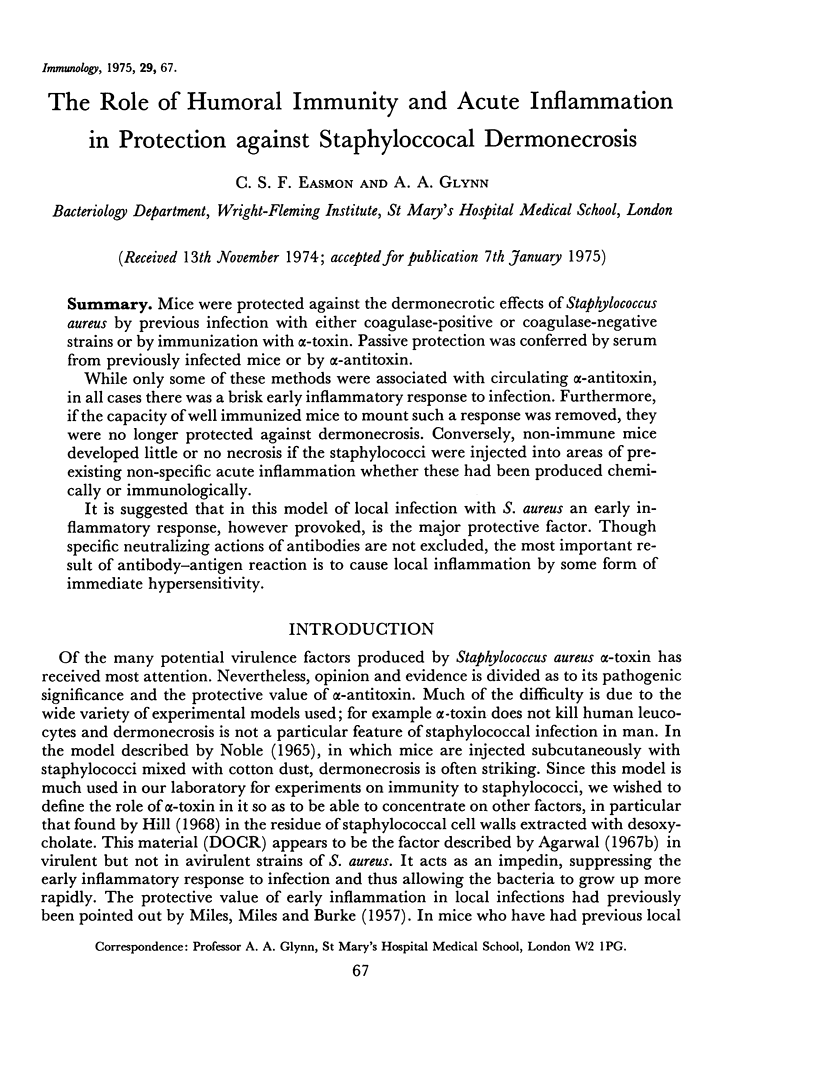
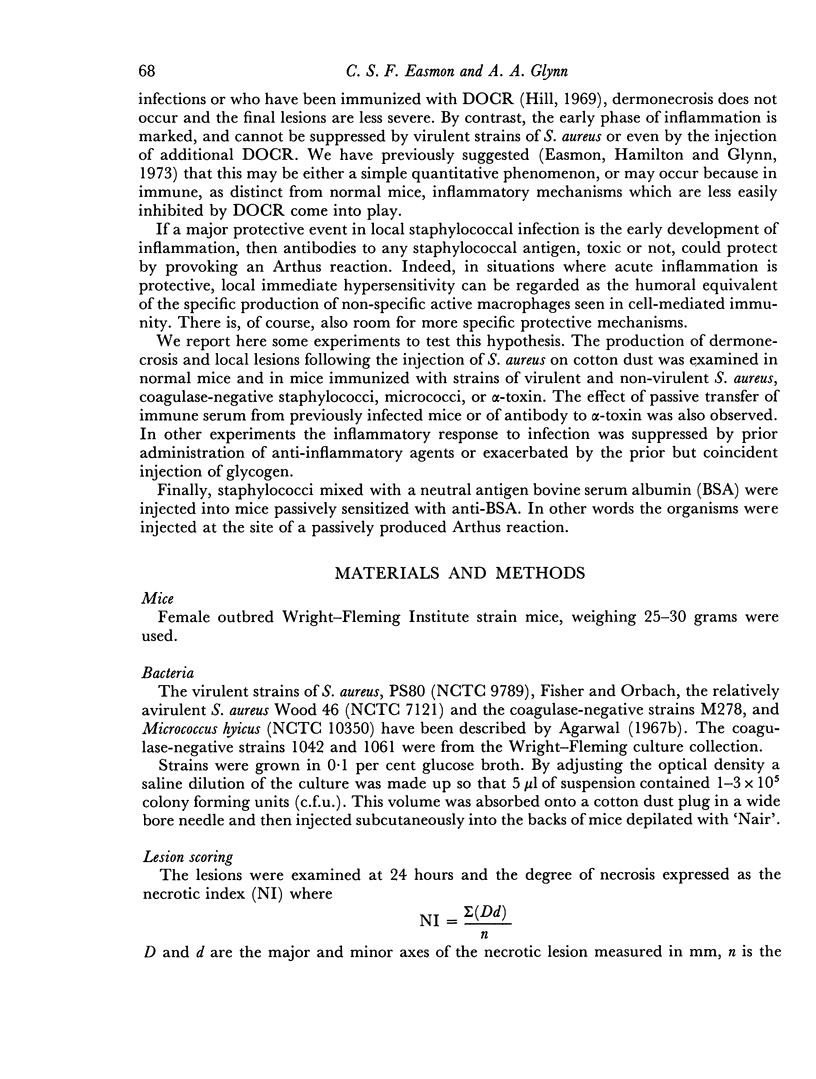
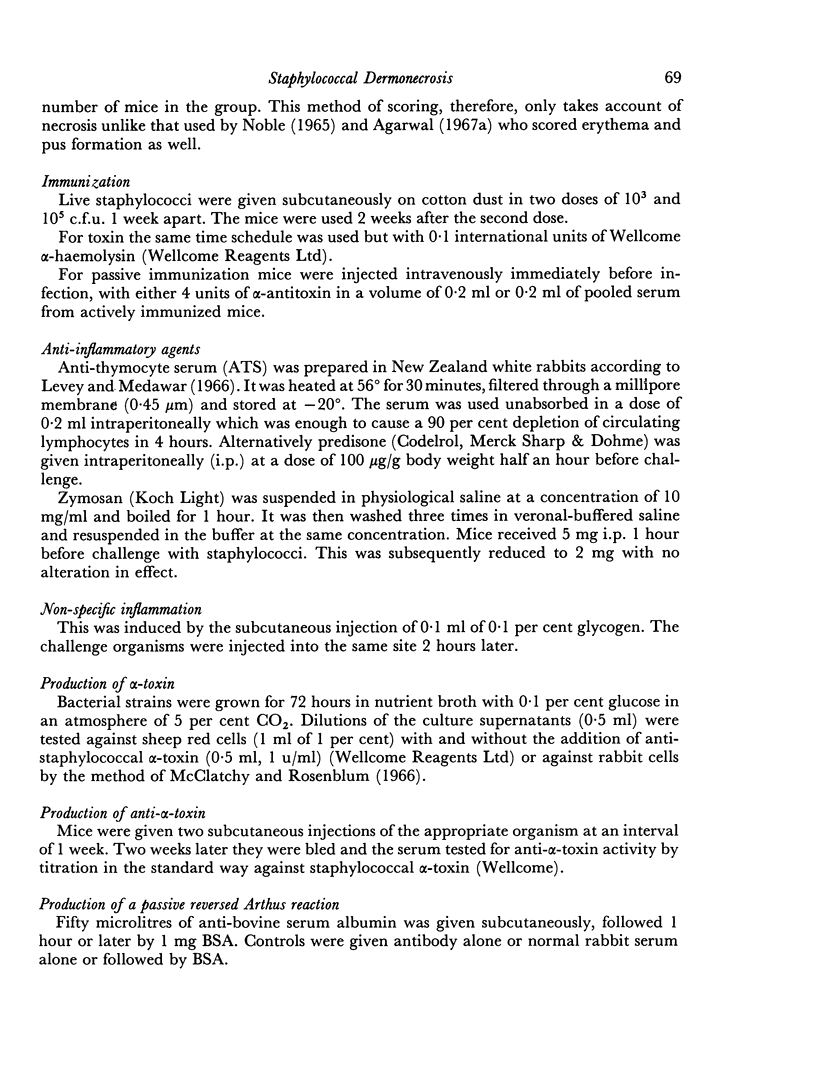
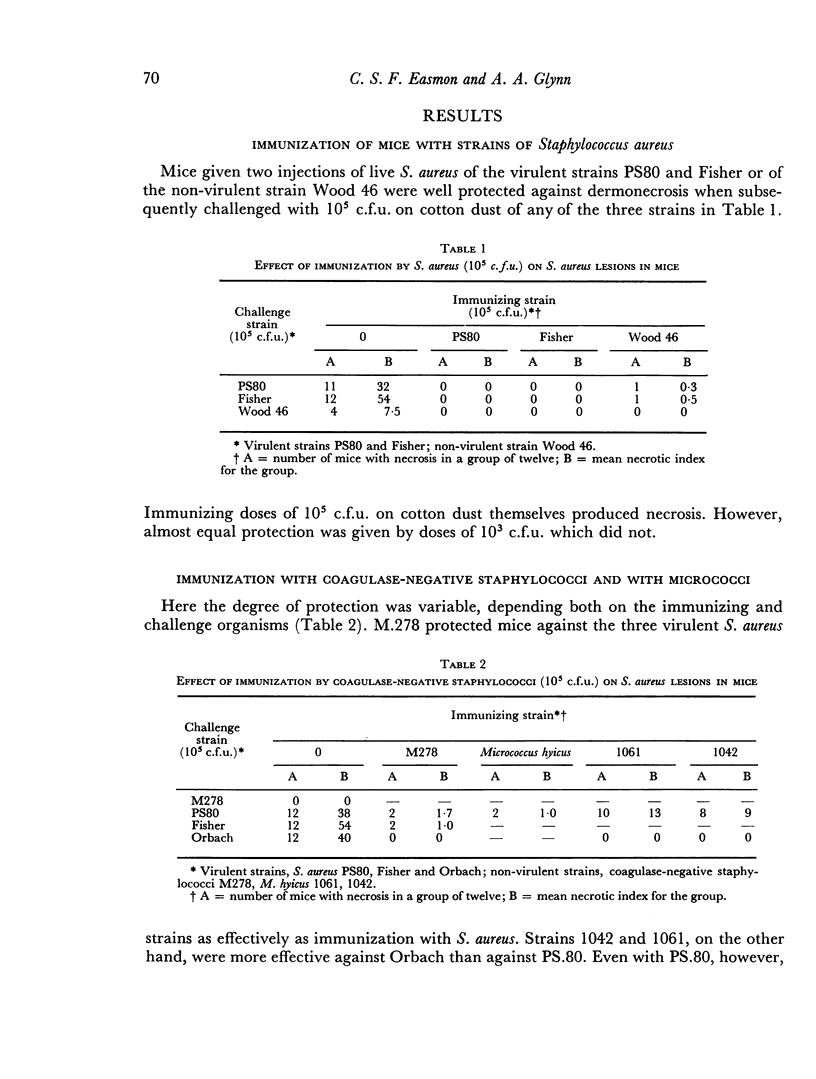
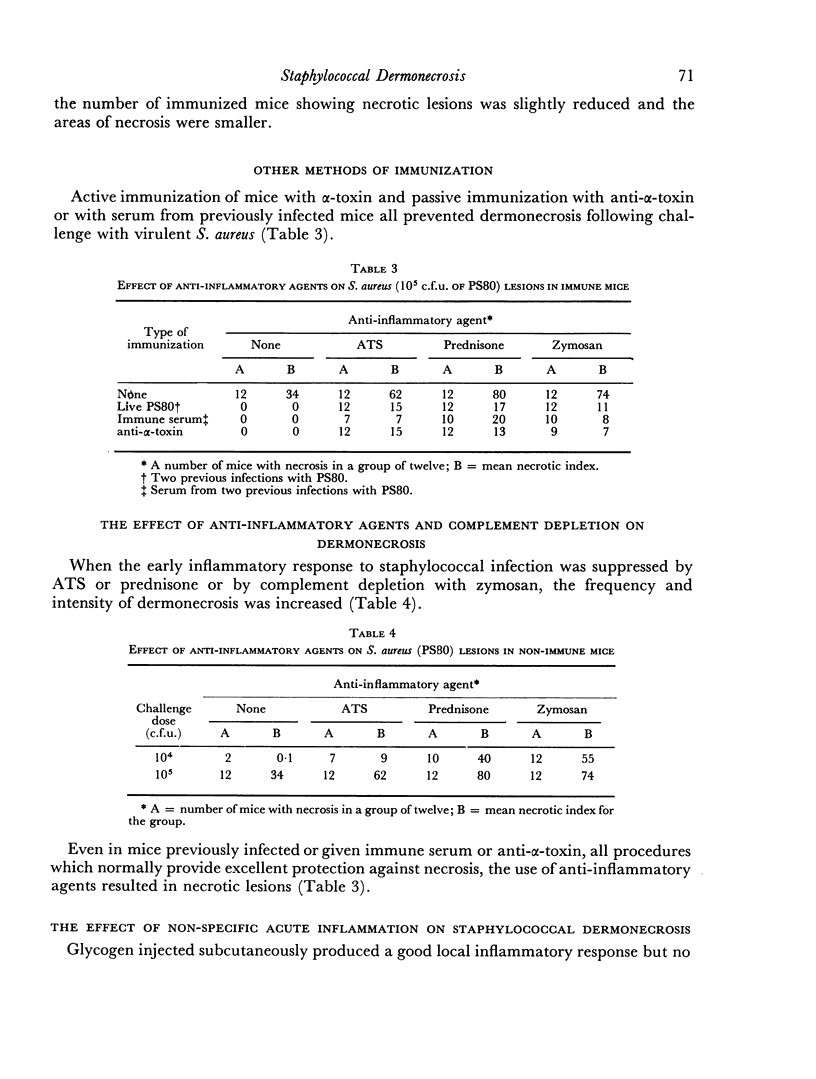
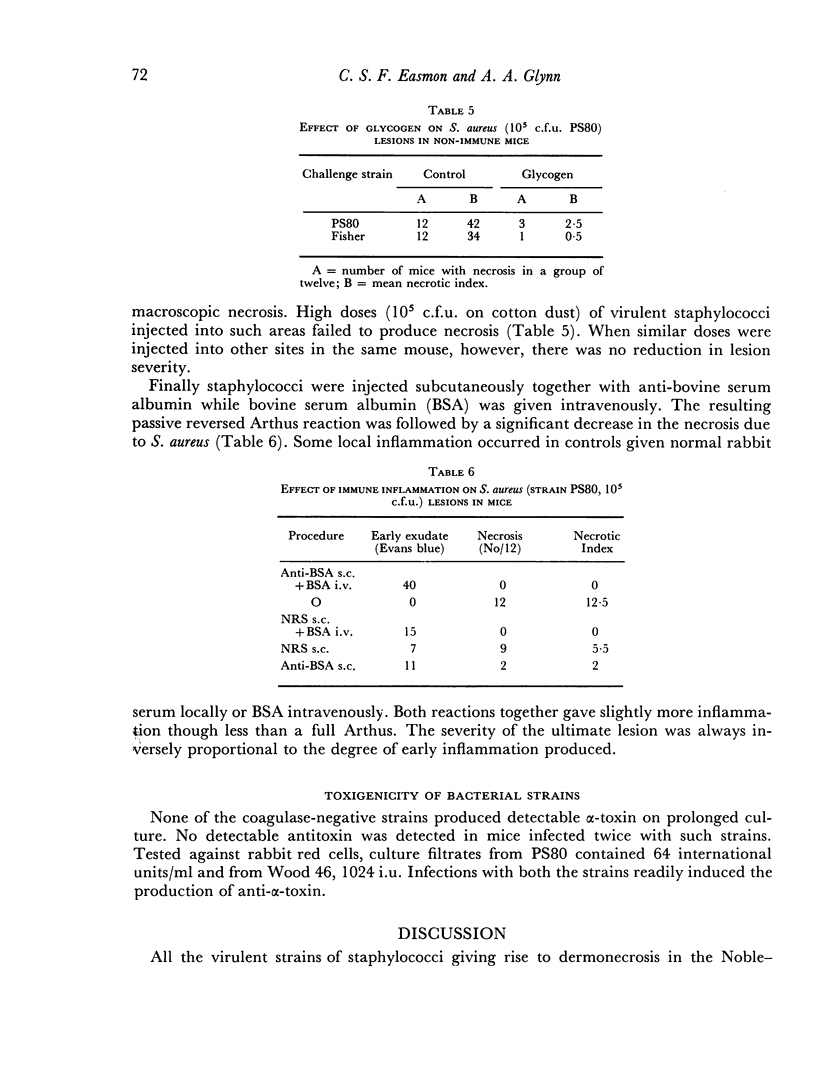
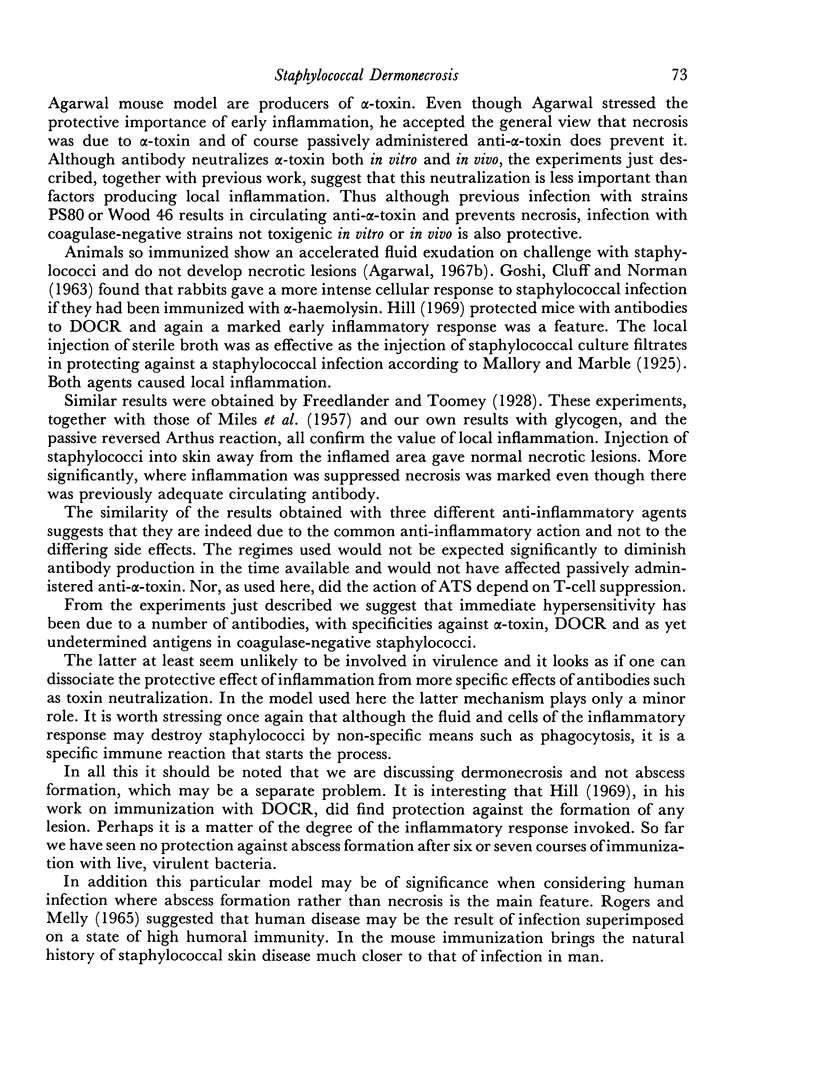

Selected References
These references are in PubMed. This may not be the complete list of references from this article.
- Agarwal D. S. Subcutaneous staphylococcal infection in mice. II. The inflammatory response to different strains of staphylococci and micrococci. Br J Exp Pathol. 1967 Oct;48(5):468–482. [PMC free article] [PubMed] [Google Scholar]
- Easmon C. S., Hamilton I., Glynn A. A. Mode of action of a staphylococcal anti-inflammatory factor. Br J Exp Pathol. 1973 Dec;54(6):638–645. [PMC free article] [PubMed] [Google Scholar]
- GOSHI K., CLUFF L. E., NORMAN P. S. Studies on the pathogenesis of staphylococcal infection. VI. Mechanism of immunity conferred by anti-alpha hemolysin. Bull Johns Hopkins Hosp. 1963 Jan;112:31–47. [PubMed] [Google Scholar]
- Hill M. J. Protection of mice against infection by Staphylococcus aureus. J Med Microbiol. 1969 Feb;2(1):1–7. doi: 10.1099/00222615-2-1-1. [DOI] [PubMed] [Google Scholar]
- MILES A. A., MILES E. M., BURKE J. The value and duration of defence reactions of the skin to the primary lodgement of bacteria. Br J Exp Pathol. 1957 Feb;38(1):79–96. [PMC free article] [PubMed] [Google Scholar]
- McClatchy J. K., Rosenblum E. D. Biological properties of alpha-toxin mutants of Staphylococcus aureus. J Bacteriol. 1966 Sep;92(3):575–579. doi: 10.1128/jb.92.3.575-579.1966. [DOI] [PMC free article] [PubMed] [Google Scholar]
- Noble W. C. The production of subcutaneous staphylococcal skin lesions in mice. Br J Exp Pathol. 1965 Jun;46(3):254–262. [PMC free article] [PubMed] [Google Scholar]
- Rogers D. E., Melly M. A. Speculations on the immunology of staphylococcal infections. Ann N Y Acad Sci. 1965 Jul 23;128(1):274–284. doi: 10.1111/j.1749-6632.1965.tb11644.x. [DOI] [PubMed] [Google Scholar]


